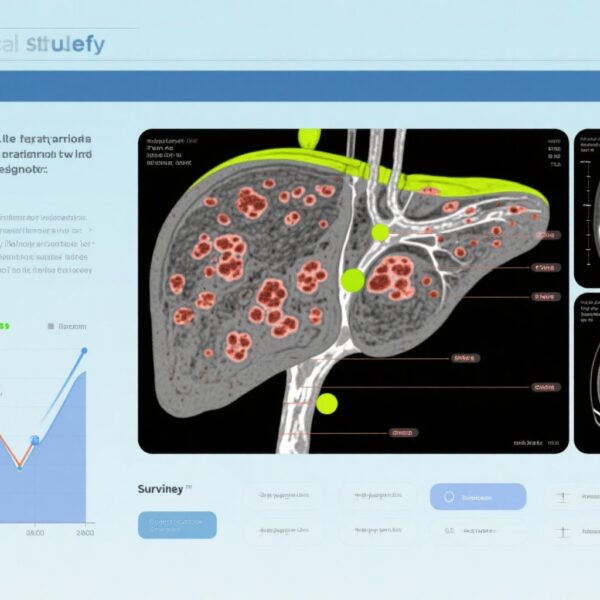Highlight
- Incisional hernias after stoma reversal occur in approximately 30% of patients, with half requiring surgical repair.
- Prophylactic synthetic mesh placement in the retromuscular space during stoma reversal reduced incisional hernia incidence from 17.9% to 0% at 12 months.
- No increase in surgical site infections or postoperative complications was observed with mesh placement.
- Patients with prophylactic mesh reported significantly better hernia-related quality of life one year post-operation.
Study Background
Stoma reversal surgery—restoring intestinal continuity after a temporary diverting stoma—is generally considered low risk. Nonetheless, it carries an impactful postoperative complication: incisional hernias at the stoma site. Recent observational data report that roughly one-third of patients experience this complication, with many requiring additional surgery due to symptoms or complications. Incisional hernias not only affect physical health but also negatively impact patients’ quality of life, causing discomfort, pain, and cosmetic concerns.
Prophylactic mesh placement has been explored in various abdominal surgeries to prevent hernia formation, yet its role in stoma reversal is not well established. This study sought to rigorously evaluate whether placing a synthetic mesh prophylactically at the stoma closure site could reduce incisional hernia rates and improve patient outcomes without increasing risks.
Study Design
This prospective, parallel, single-blinded randomized clinical trial enrolled 88 patients from two major teaching hospitals in the Netherlands, conducted from July 2018 through June 2023. Eligible patients underwent elective stoma reversal. Key exclusion criteria ensured homogeneity by omitting those with connective tissue diseases, intraperitoneal dialysis, immunodeficiency, prior mesh close to the stoma site, known mesh allergies, pregnancy, and inflammatory bowel disease as the initial indication.
Participants were randomized into two groups: the control group (n=44) received conventional stoma closure, while the intervention group (n=44) underwent stoma closure reinforced with a prophylactic synthetic mesh placed in the retromuscular space. Follow-ups occurred at 30 days, and 3, 6, 9, and 12 months postoperatively.
The primary endpoint was the radiologically confirmed presence of an incisional hernia at the stoma site at 12 months. Secondary endpoints included postoperative complications, particularly surgical site infections, and quality of life assessed by validated instruments such as the EuroQoL 5-Dimension, visual analog scale, 36-item short form survey, and hernia-related quality of life questionnaires.
Key Findings
At one-year follow-up, 79 patients completed the trial protocol (39 controls and 40 mesh group). The primary analysis demonstrated a substantial reduction in incisional hernias: 17.9% (7/39) in the conventional closure group versus 0% (0/40) in the mesh group (relative risk 0.18; 95% CI, 0.034-0.330; P = .02). This corresponds to a number needed to treat (NNT) of 6 to prevent one hernia, indicating a highly effective intervention.
Importantly, prophylactic mesh placement did not increase the incidence of surgical site infections or other postoperative complications, alleviating concerns about potential mesh-related morbidity. Furthermore, patients receiving the mesh reported significantly better hernia-related quality of life scores at 12 months compared with controls, suggesting not only a structural benefit but meaningful clinical and patient-centered advantages.
These findings were robust and clinically significant, providing compelling evidence for prophylactic mesh use in this surgical context.
Expert Commentary
The trial addresses a critical and unmet need in managing complications following stoma reversal—a commonly performed procedure worldwide. Prophylactic mesh placement leverages the well-established principle of reinforcing vulnerable fascial closures to prevent herniation. While mesh use has been routine in ventral hernia repairs, its prophylactic adoption specifically during stoma reversal had lacked high-quality randomized data before this study.
The retromuscular space placement is biomechanically sound as it provides durable reinforcement without excessive foreign body exposure to intraperitoneal structures, mitigating mesh-related complications. Given the low complication rates observed and improved quality of life, this approach balances risk and benefit favorably.
Limitations include the single-blinded design and the 12-month follow-up which may underestimate later hernia development; longer-term data will be valuable. Additionally, generalizability to patients excluded here, particularly those with inflammatory bowel disease, requires caution.
Overall, this trial sets a new standard for reducing a common, morbid complication after stoma reversal and may prompt guideline updates supporting prophylactic mesh use in elective cases.
Conclusion
Prophylactic synthetic mesh placement in the retromuscular space during stoma reversal surgery significantly reduces the incidence of incisional hernias at the stoma site without increasing postoperative complications. The intervention also enhances hernia-related quality of life at one year follow-up.
Surgeons should consider incorporating prophylactic mesh reinforcement as a practice-changing strategy to improve outcomes in patients undergoing elective stoma reversal. Future research should focus on longer-term outcomes and expansion to broader patient populations to consolidate these promising findings.
References
Burghgraef TA, Amelung FJ, Kertzman BAJ, Draaisma WA, Verdaasdonk EGG, Verheijen PM, Consten ECJ. Prevention of Incisional Hernias With Prophylactic Synthetic Mesh Placement During Stoma Reversal: A Randomized Clinical Trial. JAMA Surg. 2025 Sep 10:e253445. doi: 10.1001/jamasurg.2025.3445.
Dutch Trial Register: NL-OMON27268.



